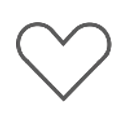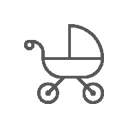A person diagnosed with eczema is exposed to severe physical and mental sufferings, feeling shy and lonely, often avoiding the company of others. But it’s important to remember that you are not alone with your problem. According to WHO, 3% of the world population is suffering from different forms of eczema, and this number is constantly growing. This insidious disease is identified in 40% among all skin illness cases. Eczema light therapy combined with medicament methods is considered one of the most effective way of eczema treatment. Another advantage is that you can achieve the effect even at home.
Eczema: origin and causes
Two centuries before our era, any skin inflammation was called eczema. It was allocated to a separate group of diseases only at the end of the XX century. Today, a huge amount of eczema types have been classified. Dermatitis is also commonly included in this group.

What can cause eczema?
- Heredity. If the child’s parents suffered from allergic diseases (accompanied by skin rashes), the chance that child will develop eczema is quite high. According to statistics, 60% of eczema cases can be attributed to genetic predisposition.
- Allergy. Another eczema trigger can be irritant allergens and the immune reactions that they cause on the skin.
- Chemical irritants: household chemicals, cleaning products, decorative cosmetics, workplace pollution, polluted environment.
- Injuries with skin lesions. The disease can develop on the affected areas.
- Stress. Nervous tension is a frequent trigger for many dermatological diseases, including eczema.
- Infections: viruses, bacteria, fungi. They may cause the primary or the secondary form of eczema.
- Humidity, temperature: excessive moisture, severe sweating or dryness, too high or too low temperatures.
- Chronic diseases, for example, digestive tract disorders.
- Hormonal changes. Especially it concerns women. Hormonal changes might aggravate chronic eczema.
Eczema symptoms
- edema,
- redness,
- bubbles with a liquid, which can open up from time to time,
- skin dryness and irritation,
- moderate or intolerable itching,
- ulceration,
- crusts, keratinization.
All these signs can be observed simultaneously or alternating each other.
Important! A diagnosis can’t be confirmed without the doctor, self-treatment is also not allowed! It’s not easy to identify eczema among many other skin diseases, wrong treatment can worsen the conditions.
Localization: palms, hands, neck, face, elbows, knees, inguinal folds. Eczema can appear anywhere.
What does it look like?

How to treat eczema?
Usually, the doctor is trying to exclude any triggering factors. The treatment may include strict diet, antihistamine, sedative, hormone balance correcting medications. If the patient suffers from mycosis form of the disease, antifungal drugs might be prescribed. It is recommended to avoid stresses and worries, to wear clothes and underwear made from the natural materials. If the climate obviously worsens conditions, then you might possibly consider moving to another region.
Why the light therapy?
UV rays of a narrow spectrum (311-313) have a pronounced cytostatic effect on skin cells, reducing the speed of their renewal. Because of that unpleasant symptoms disappear. Light destroys the immune cells of T-lymphocytes, and therefore, affects the source of the pathological skin reaction.
Eczema light treatment in combination with various creams is an effective and painless way to get rid of the disease. 60-70% of the patients (with moderate and severe from) positively respond to this effect. Eczema phototherapy helps even in cases where other measures didn’t bring any results. Sometimes you can even avoid using of medications like Cyclosporine and Methotrexate.
Eczema phototherapy has been used since 1979 and it is still consistently productive. But only the last decades the safest narrowband spectrum of UV radiation.
Eczema phototherapy relieves the aggravation and discomfort (peeling, inflammation, and itching), stimulates vitamin D production, and significantly prolongs the period of remission of the chronic form of the disease.
Using a narrow-band UVB (311-313 nm) as a part of a complex treatment of eczema has a number of advantages:

In combination with correctly prescribed drug treatment, it helps to achieve stable results in a short period of time.

It has a minimum side effects (compared to broadband UVB, that was used since 1970).

Provides stable results.

Safe for children (but only after consulting a doctor).
Results
Eczema light treatment is really effective and our clients had a chance to see it. According to the research, the best result can be achieved if you apply the procedure 3-5 times a week for 4-8 weeks, with a gradual increase in exposure time. Treatment is equally effective for light form of eczema, with a small damaged area, and for severe conditions on the very advanced stage.
Attention! Don’t practice self-treatment! Only doctor can help you with diagnosis and prescription of the right therapy, including eczema light treatment.

Your prescription may also include some hormone-containing ointments, antiseptics, soothing creams, natural based moisturizers.
Important
- Eczema light treatment should begin with a doctor’s visit and diagnosis.
- When using a photosensitizing drug, the doctor should test your tolerance to it first.
- Accurately follow all the recommendations.
- Clean your skin before using the UVB lamp (from cosmetics, sweat etc.)
- Wear sunglasses to protect your eyes before the eczema phototherapy procedure.
Since eczema phototherapy requires a long time, it is extremely convenient to have a UVB device at home. This will spare you unnecessary visits to the clinic and allow you to have a procedure at any convenient for you time. This opportunity will be especially appreciated by patients with a chronic form of disease.


